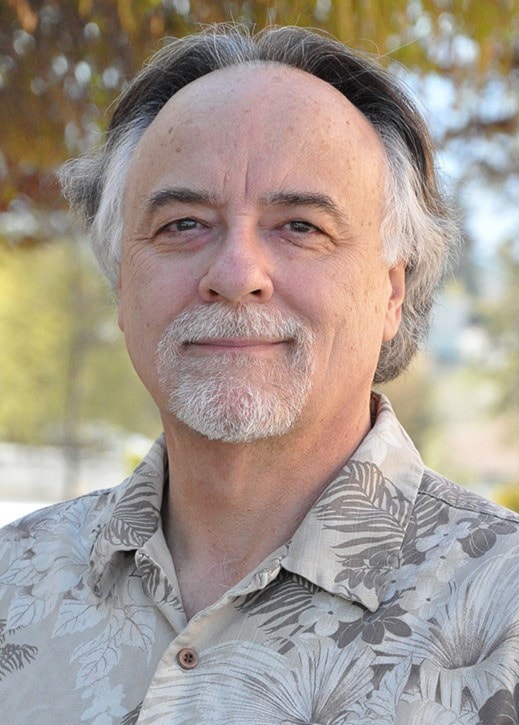In the last few weeks it has been a joy to offer a review of Sigurd Askevold’s book, A Worm in the Apple, and a two-part story about how it came to be published, to Advance readers. It has also been sad experience, too, with Dr. Imme Askevold’s passing on in Swan Valley Lodge on Feb. 20.
Among the joys has been time spent with Sigurd and Imme’s children, Ingolf and Dee. On Saturday, I jumped at the opportunity for breakfast at the Break in Time Caffe to ask Ingolf about his family’s connection to Argenta and the Religious Society of Friends, which is more commonly know as Quakers.
My curiosity was piqued because I didn’t think of Sigurd or Imme as being particularly religious. Spiritual? Absolutely. Religious? Not so much.
Ingolf explained. Sigurd’s parents were close friends of a Quaker family in pre-WWII Germany. That family immigrated to Pickering, Ontario after the war.
When Sigurd and Imme also made plans to leave Germany, Sigurd did not consider the US as a potential destination. He recalled American-run prisoner of war camps, Ingolf said, and what the Americans did when they shut down a camp. All of the camp’s supplies, food included, would be collected in a huge pile, and then burned. That waste and vengefulness was not to be forgiven in Sigurd’s mind.
Instead, when their paperwork was finally completed in 1951, the young couple headed across the Atlantic for Pickering, where the Askevold family friends would provide their entrée to a new life in Canada. Imme stayed in Ontario with their baby, Kirsten, and Sig boarded a train in search of a place to settle down. The prairies didn’t impress him, but he took an immediate liking to Creston after disembarking from the train. He arrived during Blossom Festival.
“Dad took a walk around and came across the high school,” Ingolf said. “He went inside and said, ‘I’m here about the job.’” That was a ruse, of course, something that Sig was adept at from his wartime experiences. It came as no surprise to me that he left a short time later with the promise of a teaching position in September. Learning about a possible temporary job to tide him over until the new school year, he headed northward to Riondel.
Soon after Imme and Kirsten arrived to join him, they learned of a group of Quakers who had arrived in the West Kootenays, settling in Argenta, at the north end of Kootenay Lake.
The appeal of the Quakers, according to Ingolf, was their dedication to the land, hard work and to watching out for one another. He described them as the original Greens.
As a young child, he remembers making the not particularly short or easy drive to Argenta on every long weekend and for long summer stays. He can name the families that lived there and tell stories about them all.
The Askevolds camped on another family’s property, in one of a half dozen sites cleared for just that purpose. Eventually, a 16-acre parcel of land with a cabin came up for sale and Imme and Sigurd made the purchase. Sig would hand-dig a trench in the rocky ground to run a water line from a creek up the hillside, hundreds of metres away.
Regular meetings, a Quaker practice, were held in the community hall, the family would go after the religious portion was complete. “Dad wanted nothing to do with the Bible stuff.” The appeal, he recalls, was an hour of silence, broken only by the occasional words a member felt worth sharing. Sometimes it was only a meditative silence, a notion he still considers comforting.
“I’ve gone to some meetings in Tallahassee (Florida, where he now lives) when I really needed to sort out my thoughts. It really does work for me.”
As adults, the Askevold children stored camping gear in their parents’ Creston home, and would pack it up and head to Argenta so their own kids could experience what Ingolf recalls to have been a remarkable community. That tradition pretty much died a few years ago when it came time for Imme to sell the house and live in a seniors’ facility. The Argenta property was sold a short time later, and Imme was able to make a visit back to meet the new young owners, who had a baby at the time. She approved.
Ingolf describes the Argenta Quakers, at least the early ones, as being much like the Amish. You can’t live in Argenta if you don’t like hard work, he says. It’s a rugged area that can work against you if you don’t put in the effort.
One of the best things about small-town living, I think, is the chance to learn the back stories of people you might have known for a long time, and perhaps even though you knew very well. The Argenta-Quaker connection the Askevold family was new to me, and I am glad I had was able to hear some of the stories first-hand.
